Last Updated on October 22, 2025 by Michelle
I’m a pretty big fan of cauliflower. And probiotics. So I finally–reluctantly–put the two together and tried to ferment cauliflower.
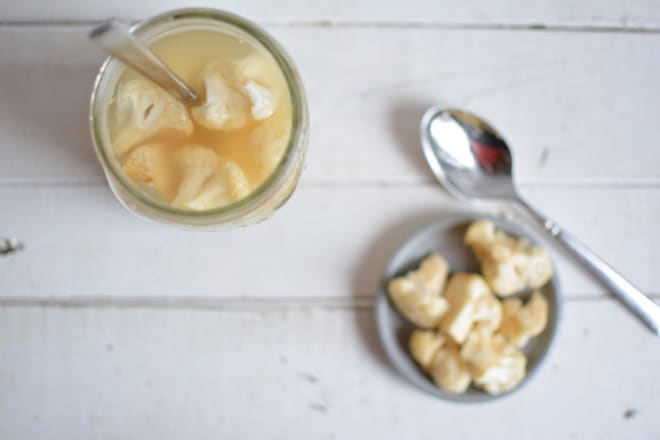
I should say, right up front, I’ve never even considered fermenting any vegetables. Cause well, there’s sauerkraut. I despise sauerkraut. So I was pretty sure I would despise all fermented veggies.
Kombucha led me to this
But the more I learned about the crazy-good-for-you stuff that happens to kombucha because it’s fermented, the more I thought about trying to ferment some veggies.
Maybe I should explain the whole “kombucha thing.” I started making our family’s own kombucha after I learned the amazing health benefits for our guts. I kept making kombucha after realizing how delicious it tastes and how cheap it is to make it yourself. (If you’re curious to know more about kombucha, you’ll find some of the many things I’ve written about kombucha here and you can find out about my master class, Simple DIY kombucha, here.)
So it stands to reason that maybe… just maybe… fermented veggies would offer us the same benefits. And bonus, if they don’t all taste like sauerkraut, maybe I’d be on to something.
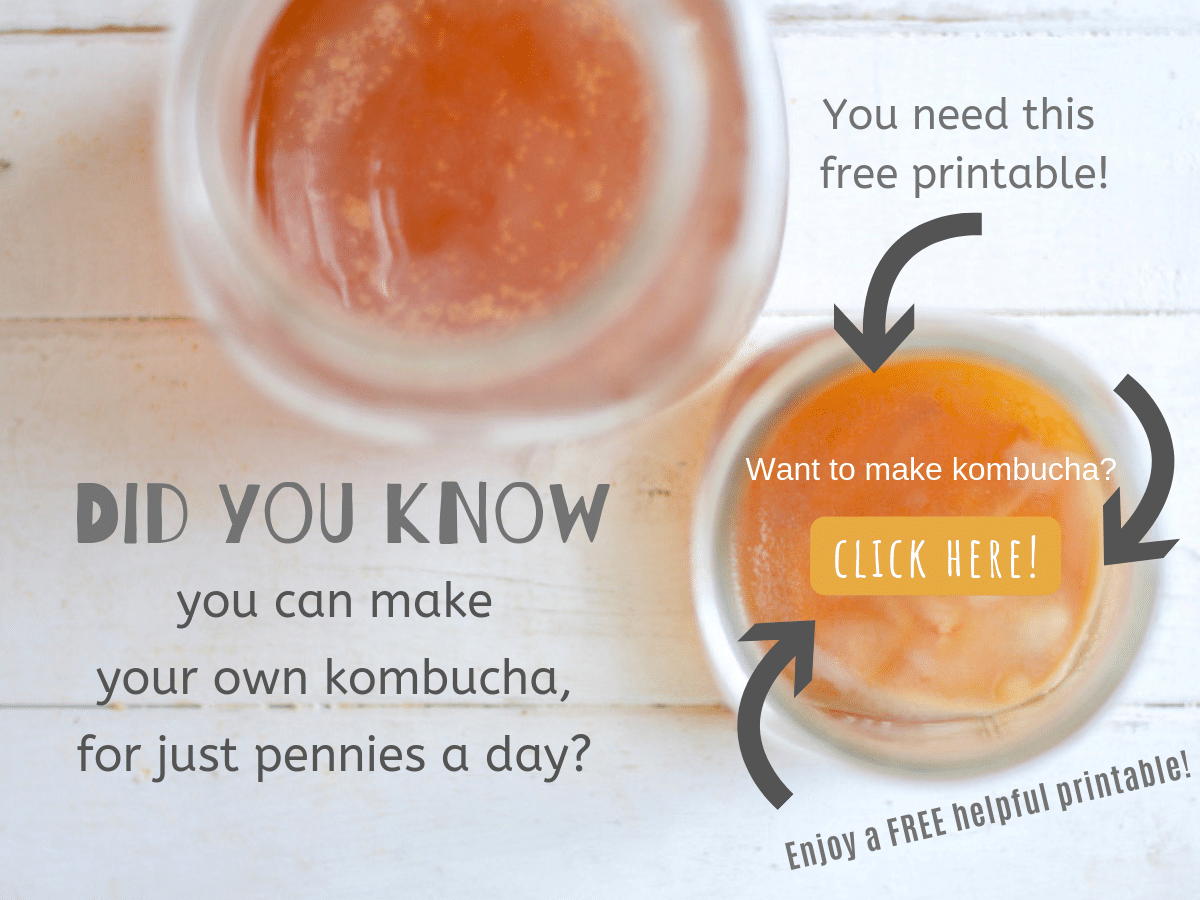
I love these fermenting springs!
So I got these really nifty fermenting springs in the mail from True Leaf Market.
I’ve been getting my seeds from True Leaf for a while because they’re a small, independent seed company that I’m really impressed with. In fact, they’ve been around since the 70s, so I have no idea why I hadn’t heard of them sooner. But when I saw this fermenting kit on their site, I knew had to dive in and give this fermenting thing a try.
Does the salt matter?
When you’re fermenting cauliflower, or any vegetable, you want to use a high-quality salt, not the standard table salt most folks buy at the grocery store.
You see, table salt has iodine in it. Iodine inhibits the growth of the good-for-you stuff in a culture that is trying to mature in your fermented veggies. So read your salt label and avoid iodized salt, as well as any salt that has anti-caking agents. Instead, choose an unrefined, whole salt that is naturally full of vitamins and minerals, because the best ingredients lead to the healthiest and most delicious fermented veggies.
Check out this discount!
Simply use this link to place any order at Redmond’s Real Salt & use my code SWEETSALT to enjoy 15% off.
WhooHoo! Cause everybody loves a discount, yes? But don’t wait to snag this one; it may not be available for long.
So what’s fermented cauliflower taste like?
Turns out, fermented cauliflower tastes nothing like sauerkraut. I’d say it’s a cross between pickles and raw cauliflower, and it really adds some umpf to a tossed salad. It’s nice for a different snack to crunch on. Of course this snack has something most can’t offer me–minerals, nutrients, vitamins, and enzymes that all lead to good gut health. And there’s no hint of sauerkraut. Win-win.
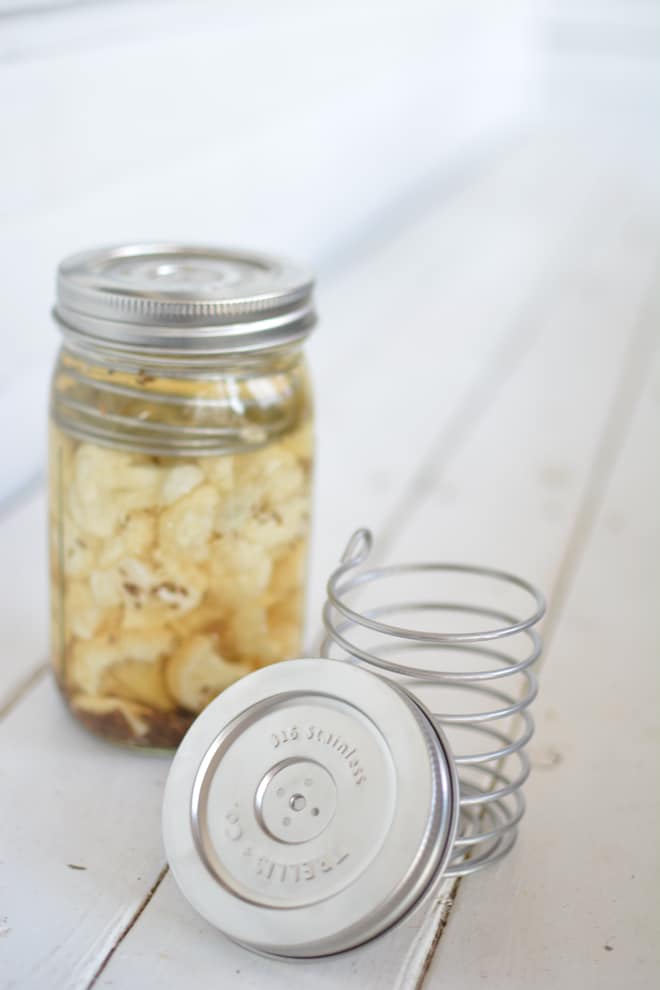

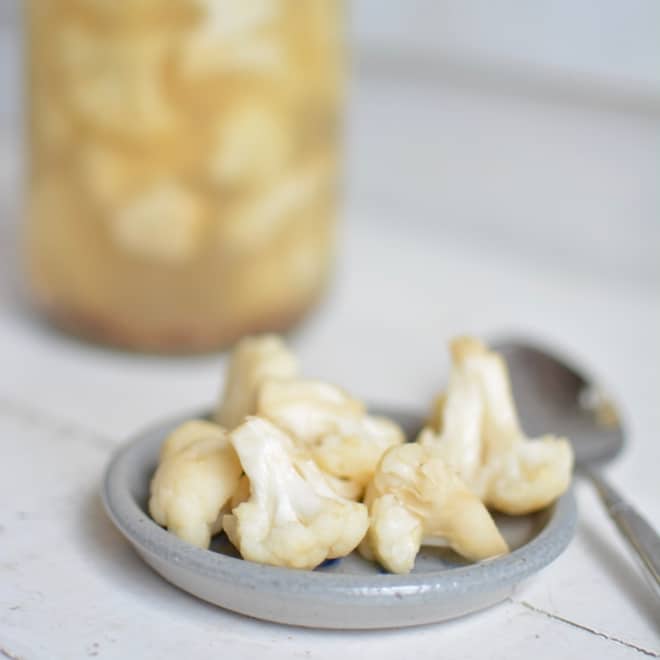
How to Ferment Cauliflower
Ingredients
- filtered
- 3 teaspoon of dill seed (I order from here)
Instructions
- Mix water and salt to make brine; set aside.
- Place one garlic clove and the one teaspoon of dill seed in each jar.
- Chop cauliflower into bite-sized pieces and separate them among your three jars, just tossing them on top of the garlic and dill. Then pour brine over cauliflower, dividing it over all three jars until the cauliflower is completely covered. (If you don’t have quite enough brine, you can add a little water to top off each jar.)
- Place fermenting springs on top of the cauliflower and press down so the cauliflower is completely submerged in the brine.
- Screw on the stainless steel lid that comes with the fermenting kit. (There are little, clear plastic circles that cover the holes on each lid. These stay on the lids throughout the fermenting process.)
- Set your jars aside to ferment for 3-5 days. (It’s possible that these could overflow a little, so feel free to set a plate under the jars to catch any drips.)
- Test the cauliflower in a few days; if you’re happy with the taste, remove the spring, replace the fermenting lid with a regular lid and refrigerate. (I like using this flip top lid.) If your cauliflower isn’t quite the taste you’re going for, leave them it the counter for another few days and taste again.
If you stuck with me this long, and you’re seriously considering fermenting cauliflower, I applaud you.
You obviously care about your gut health (or you just like to try fun new things), so you should grab all my free kombucha resources and recipes right here.
More Fermenting Information for You
- If you’re intrigued by fermented tea (aka kombucha), you may be fascinated at how much money you can save by making your own.
- Want to try your hand at fermented bread? Every detail is here in this Ultimate Guide to Making Sourdough Bread.
- You have numerous fermenting weights and systems to choose from, but these oh-so-simple and oh-so-effective fermenting springs are amazing.
- Make sure you use an unrefined, healthy salt for your fermenting. Try this one and use code SWEETSALT for 15% off.
If you make some fermented cauliflower with these totally ingenious fermenting springs, or dive into the world of kombucha, please leave a comment and let me know what you think!
For everything created by God is good, and nothing is to be rejected if it is received with gratitude.
I Timothy 4:4
Pin this for later!
Click on the image below to pin this post.
Find out why SoulyRested was considered to be one of the Top 20 Must-Read Homesteading Blogs of 2018 and then one of the Top Homesteading Blogs of 2019 as well.
Glance at my Resource Page if you’d like to get a glimpse of all the supplies I use and recommend for everything from gardening, to homeschooling, to chicken care, to nature journaling, to maple syrup making.
I’d love to connect!
To find me in some other neck of the woods, just click any (or every!) icon below:
And please join in on my resource library. I’m often adding sweet bonuses.


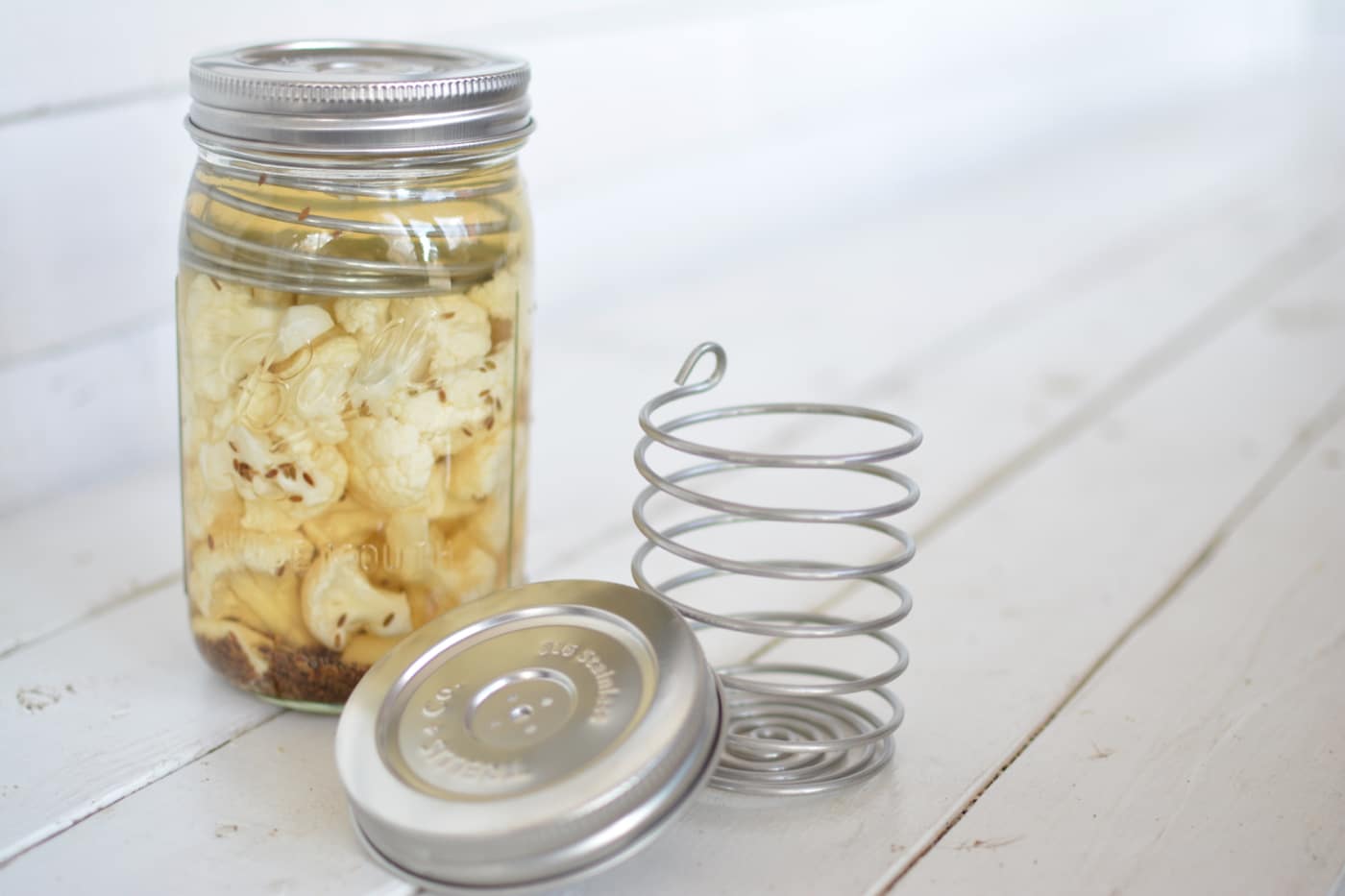
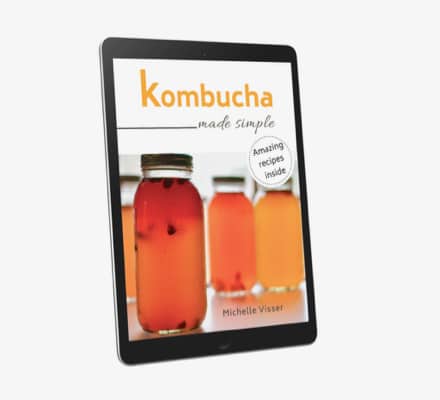
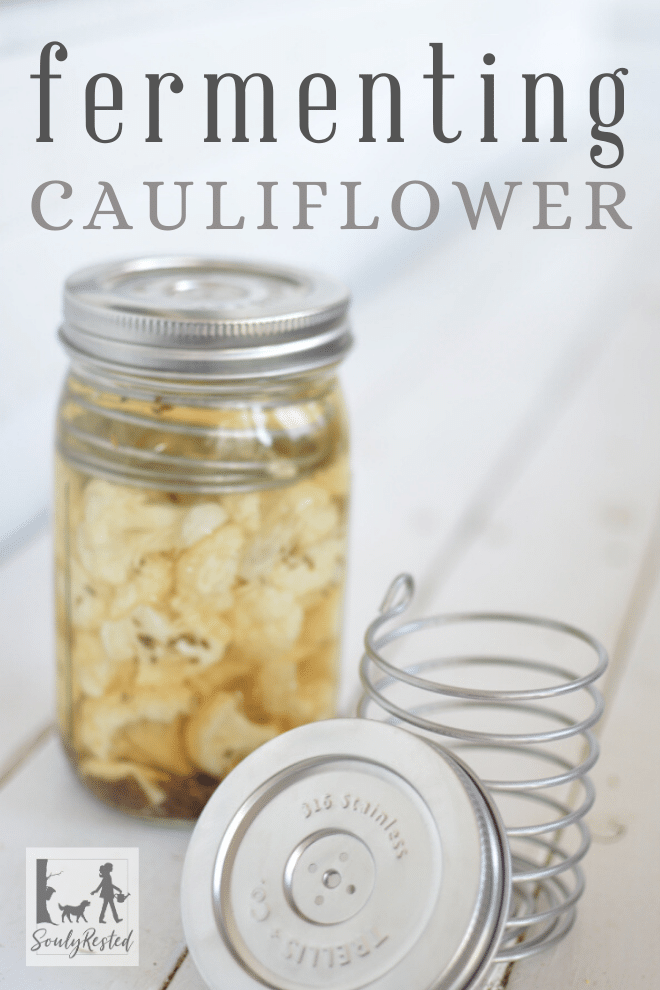





I discovered fermenting a couple years ago as a substitute for canning … I hate canning. Now I ferment all kinds of things. Fruits and veggies and greens and even eatable flower petals. Fermented applesauce has so much more flavor than cooked applesauce. Carrots with garlic and cilantro really add that umph to salad. I use my fermented foods in salad, stews and soups, sitr-fry, and snacks. Oh yeah, homemade sauerkraut is so different from the processed stuff, which is not fermented, in the store. Try doing a little bit. You may be surprised.
Ohhhh, you had me at “fermented edible flower petals.” That I’m intrigued about… sauerkraut… not so much. I just don’t imagine that’s a bandwagon I’ll jump on anytime soon… but I’m gonna have to check into these fermented flowers you speak of!!
I ferment yucca flowers because their season is so short. We eat yuccas right off the plant, in salad, stir-fry, and soup. By fermenting they don’t become limp as they might in the canning process. The flavor changes a little with the fermenting process.
O.K. on to sauerkraut … give purple cabbage a try. Just shred and ferment. Purple cabbage doesn’t make it’s own juice as green cabbage does. The flavor is sweet rather than “sauer.”
oh my… I can’t believe I’m saying this, but you have me actually vaguely maybe considering trying this purple-cabbage sauerkraut. Vaguely. I’m definitely intrigued…
You should try purple cabbage for several reasons. Anthocyanins are way higher in purple cabbage. Yes, you have to add water but not a show stopper. Purple cabbage is a natural litmus tester. In alkaline conditions, it turns blue. In acidic conditions, it turns red.
So if your ferment turns blue, something is dreadfully wrong, throw it away. If it stays purple, no fermentation is occurring. If however it turns red, fermentation is well under way and may or may not be pleasing to your palette, but safe to eat. Personally I make a less spicy kimchi with the cabbage and I like it rather tangy. Even quite tangy, it still as less bite than vinegar. I find the lactic acid to have a mellower flavor.
PS about the litmus tester idea. Most tutorials say to save one of the outside cabbage leaves as a cap to keep floaties to a minimum. You could use purple cabbage leaves in your ferment as pH indicators either on top of or in the brine. I think it would work really well for white cauliflower. Now I’m curious to see if purple cauliflower responds the same. I have a head of it I need to work with soon before it goes bad.
Purple-cabbage sauerkraut is outstanding. It’s sweeter than green-cabbage sauerkraut. Although the fragrance is the same. Even some kiddos like it.
My batch was an experiment. I wanted to see if it would work. Experiment success!
I LOVE it!!
Can’t wait to try this! What size jars did you use?
You’ll have to let me know what you think! (and how you enjoy eating it) I used wide-mouth quart jars.
I might just try this. I hate sauerkraut too. But love cauliflower and this sounds like something I might could get behind. Thanks for sharing this.
I love hearing that I’m not alone about the sauerkraut… most folk who like fermented foods love sauerkraut… I will never be a fan.